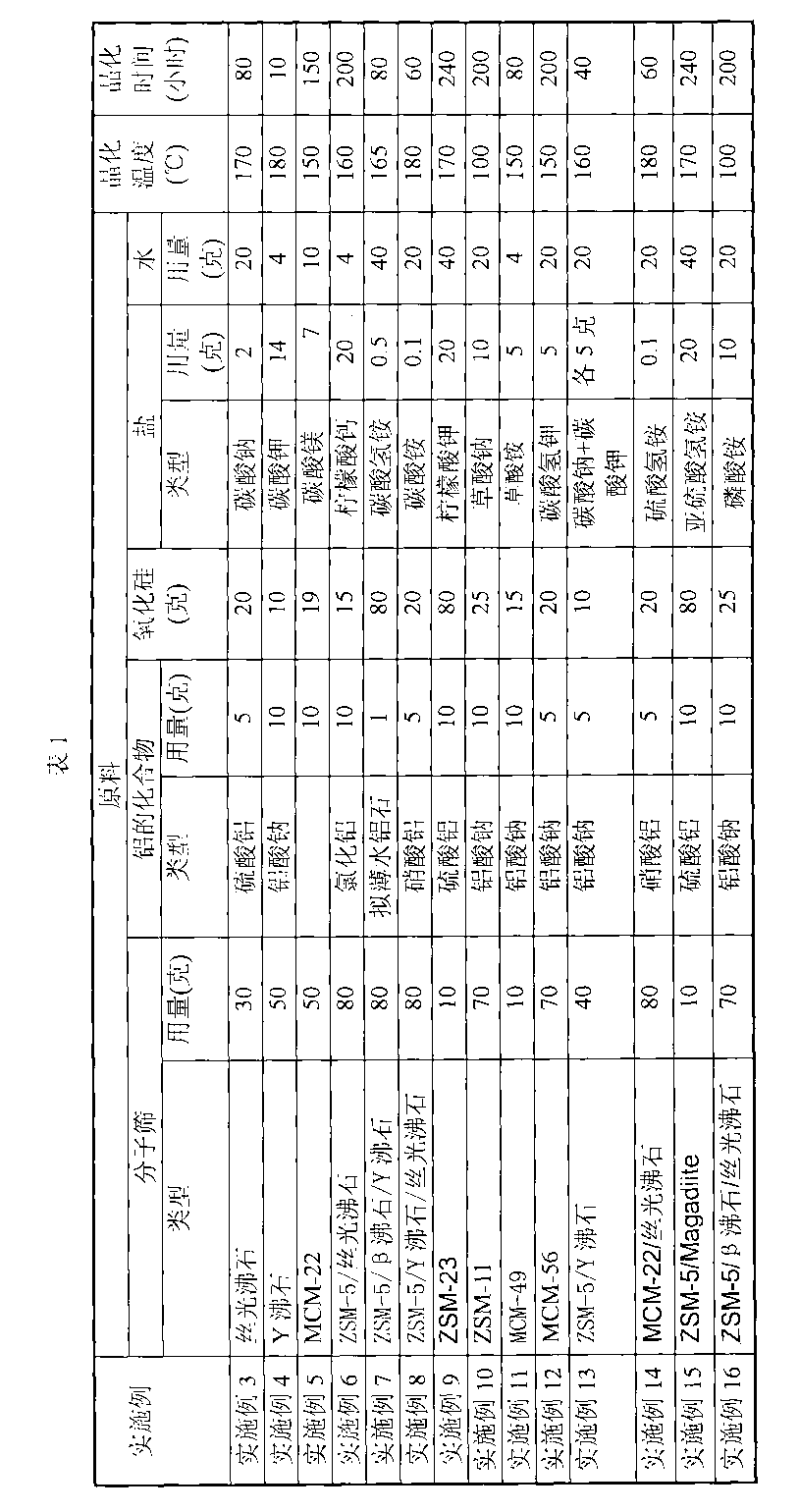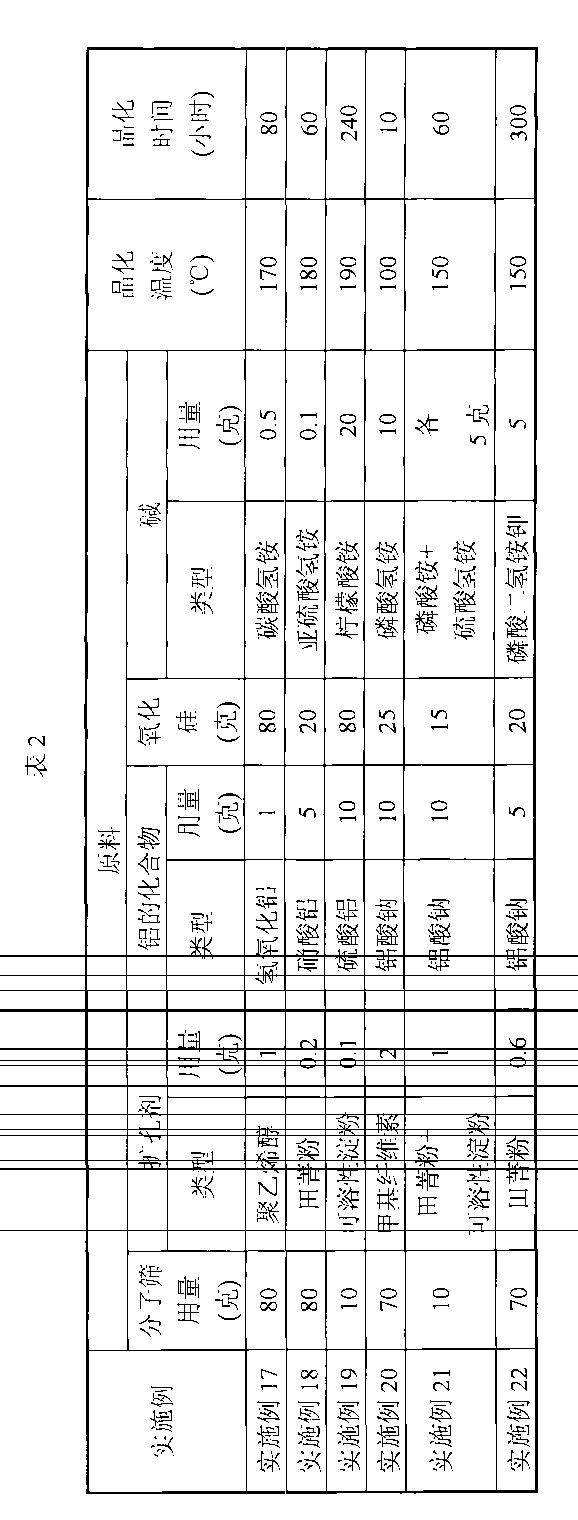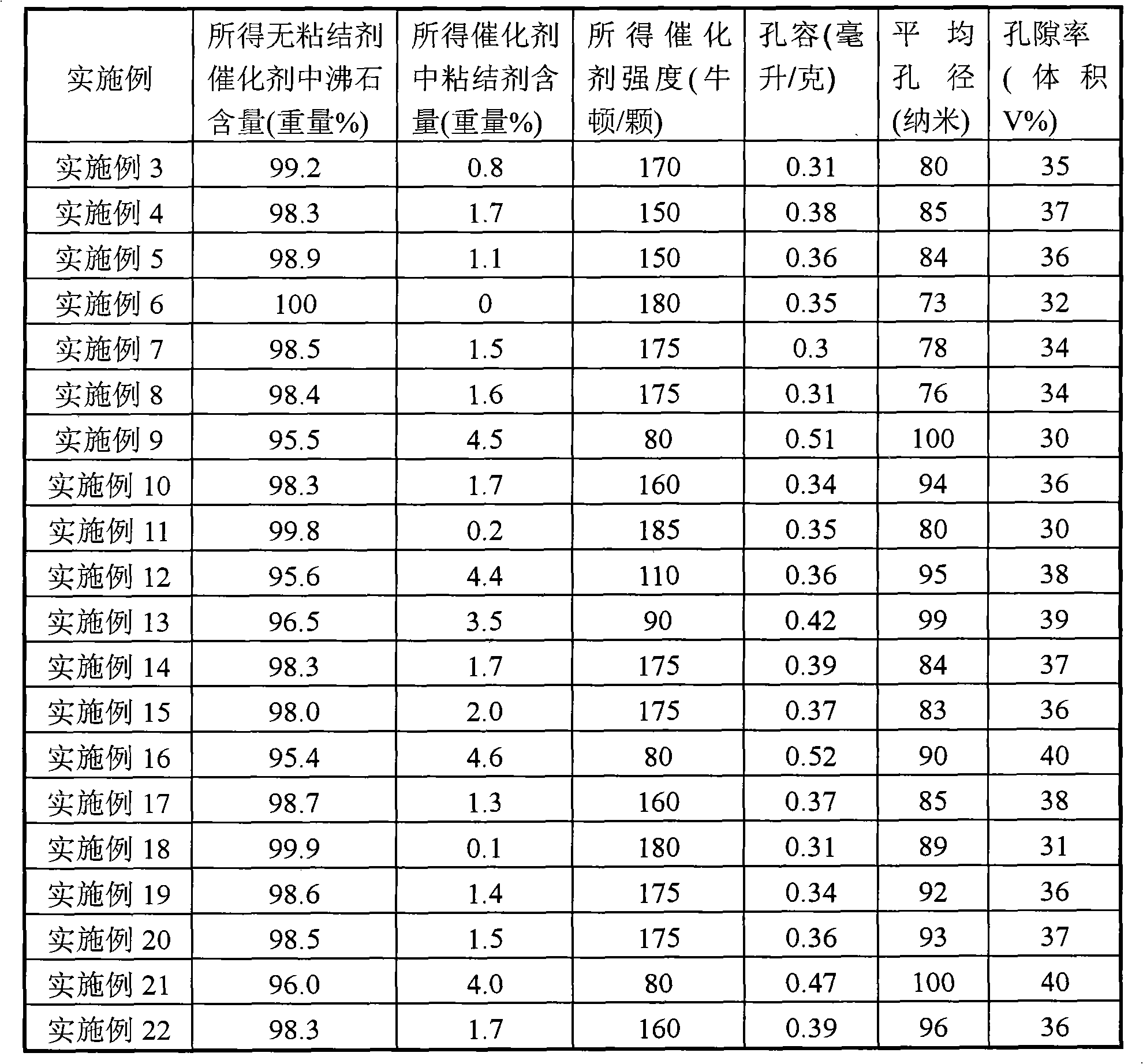Method for preparing low-carbon olefin through methanol dehydration
A technology for methanol dehydration and carbon olefins, which is applied to chemical instruments and methods, hydrocarbon production from oxygen-containing organic compounds, ethylene production, etc. The effect of tight bonding between grains and increasing carbon capacity
- Summary
- Abstract
- Description
- Claims
- Application Information
AI Technical Summary
Problems solved by technology
Method used
Image
Examples
Embodiment 1
[0030] Take 60 grams of ZSM-5 molecular sieve with a silicon-aluminum ratio (molecular ratio, the same below) of 30, add 40 grams of silica sol with a weight percentage of 40%, mix and stir evenly, and then add 1 mol / liter of sodium bicarbonate The solution is 10 ml, mixed and stirred evenly, and then the agent bar is formed, and the formed catalyst is dried at 80°C for 3 hours, and then put into an autoclave containing water at the bottom of the liner. The catalyst and liquid water are not in contact. Take it out after crystallization at 180°C for 60 hours, then wash it twice, put it in an oven for drying at 120°C for 3 hours, put it in a muffle furnace and bake it at 400°C for 2 hours, and then bake it at 550°C for 3 hours to obtain non-sticky Binder ZSM-5 catalyst. The XRD spectrum of the prepared catalyst shows a pure ZSM-5 phase. The scanning electron microscope picture of the prepared catalyst shows pure ZSM-5 grains, almost no binder in the amorphous state, and the con...
Embodiment 2
[0032] According to the method of Chinese patent CN101428233A, the ZSM-5 / beta zeolite mixed crystal molecular sieve with a silicon-aluminum ratio of 40 is prepared. Take 60 grams of ZSM-5 / beta zeolite, add 40 grams of silica sol with a weight percentage of 40%, mix and stir evenly, then add 20 milliliters of 1 mol / liter ammonium citrate solution, mix and stir evenly, and then dispense Forming, the forming catalyst is dried at 80°C for 3 hours, and then put into an autoclave containing water at the bottom of the liner. The catalyst and liquid water are not in contact. After the autoclave is sealed, put it into an oven, take it out after crystallization at 165°C for 80 hours, and then wash it with water. 2 times, put it in an oven for 3 hours at 120°C, put it into a muffle furnace and bake it at 400°C for 2 hours, and then at 550°C for 3 hours to prepare a binder-free ZSM-5 / β zeolite catalyst as shown in the table 1. The crushing strength of the test catalyst sample was 160 New...
Embodiment 3~16
[0034] Take mordenite with a silicon-aluminum ratio of 20, 60 grams of Y zeolite with a silicon-aluminum ratio of 10, MCM-22 molecular sieve with a silicon-aluminum ratio of 40, ZSM-5 / mordenite symbiotic molecular sieve with a silicon-aluminum ratio of 20, and silicon-aluminum ratio ZSM-5 / beta zeolite / Y zeolite symbiotic molecular sieve with a ratio of 40, ZSM-5 / Y zeolite / mordenite symbiotic molecular sieve with a silicon-aluminum ratio of 20, ZSM-23 with a silicon-aluminum ratio of 20, and a silicon-aluminum ratio of 30 ZSM-11, MCM-49 with a silicon-aluminum ratio of 40, MCM-56 with a silicon-aluminum ratio of 60, ZSM-5 / Y symbiotic molecular sieves with a silicon-aluminum ratio of 20, MCM-22 / mordenite with a silicon-aluminum ratio of 40 , the ZSM-5 / Magadiite that the silicon-aluminum ratio is 200, the ZSM-5 / beta zeolite / mordenite that the silicon-aluminum ratio is 30, raw material proportioning is such as table 1, according to the method for embodiment 1, obtains binderless mo...
PUM
| Property | Measurement | Unit |
|---|---|---|
| pore size | aaaaa | aaaaa |
| pore size | aaaaa | aaaaa |
| pore size | aaaaa | aaaaa |
Abstract
Description
Claims
Application Information
 Login to View More
Login to View More - R&D
- Intellectual Property
- Life Sciences
- Materials
- Tech Scout
- Unparalleled Data Quality
- Higher Quality Content
- 60% Fewer Hallucinations
Browse by: Latest US Patents, China's latest patents, Technical Efficacy Thesaurus, Application Domain, Technology Topic, Popular Technical Reports.
© 2025 PatSnap. All rights reserved.Legal|Privacy policy|Modern Slavery Act Transparency Statement|Sitemap|About US| Contact US: help@patsnap.com



